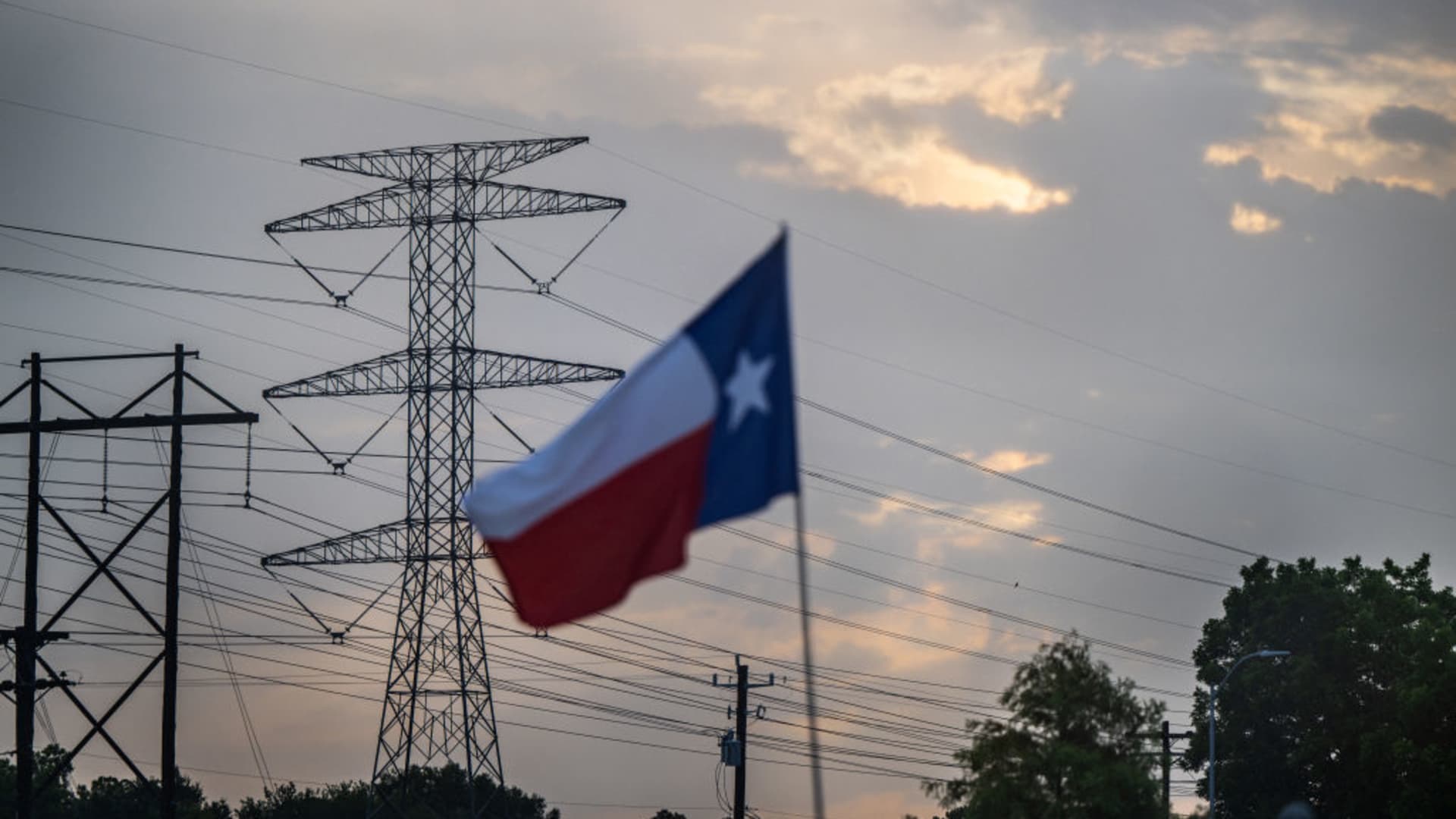Texas grid operator tells residents to curb power as heat hits record highs


Texas’ grid operator is warning residents to conserve energy for the second time this year, as fears mount over potential rolling blackouts amid scorching temperatures this week.
The Electric Reliability Council of Texas, which manages about 90% of the state’s electricity load, said that residents and businesses should turn up thermostats by at least one degree Fahrenheit and not use any major appliances between 2 p.m. and 8 p.m. Central time on Monday.
The Texas regulator also projected a shortage in energy reserves on Monday “with no market solution available,” but said it does not expect systemwide outages. Less than 10% of wind power generation will be available on Monday, ERCOT said, further lowering the amount of available power in the state.
“The heat wave that has settled on Texas and much of the central United States is driving increased electric use,” ERCOT said in a statement. “While solar power is generally reaching near full generation capacity, wind generation is currently generating significantly less than what it historically generated in this time period.”
Roughly 50 million people in the U.S. were under heat warnings or advisories over the weekend, according to the National Weather Service. Heat indexes reached over 110 degrees in southeast Texas on Sunday, leading to record high power demand that’s put pressure on the grid.
Record power usage caused by extreme weather has prompted concerns over the vulnerability of the state’s grid system, following a deadly winter storm in February 2021 that left millions of residents without power for days.
Climate change has triggered more frequent and intense disasters such as heat waves, drought and wildfires, which have forced more blackouts and overwhelmed some of the country’s infrastructure. Extreme weather has caused 67% more major power outages in the U.S. since 2000, according to an analysis by research group Climate Central.
ERCOT forecast that electricity demand in Texas will peak at 79,671 megawatts, slightly below the available 80,083 megawatts on Monday.
This post has been syndicated from a third-party source. View the original article here.




